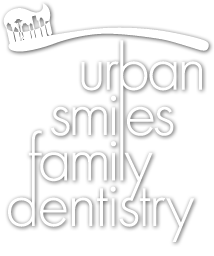Dental Extractions
You and Dr. Mironov may determine that you need a tooth extraction for any number of reasons. Some teeth are extracted because they are severely decayed; others may have advanced periodontal disease, or have broken in a way that cannot be repaired. Other teeth may need removal because they are poorly positioned in the mouth (such as impacted teeth), or in preparation for orthodontic treatment.
The removal of a single tooth can lead to problems related to your chewing ability, problems with your jaw joint, and shifting teeth, which can have a major impact on your dental health.
To avoid these complications, in most cases, Dr. Mironov will discuss alternatives to extractions as well replacement of the extracted tooth.
THE EXTRACTION PROCESS
Our primary concern during your dental visit is your comfort. The fear of experiencing pain during an extraction is something that we deal with head on. Prior to any procedure, Dr. Mironov establishes two simple rules. First, we do not start until you are sufficiently numb. Second, we stop as soon as you request it. With these two ground rules, the doctor may: add more anesthesia during the procedure; allow more time for it to take effect; try a different anesthetic; or stop the procedure completely to possibly bring you back another day. If nothing else works, oral sedation may be an option. We go out of our way to make sure you feel next to nothing during your extraction or other commonly feared procedures.
After Extraction Home Care
PAIN AND MEDICATIONS
We will provide you with appropriate prescription pain medication at the end of your extraction appointment. If you experience pain, you may also use non-prescription pain relief medications such as acetaminophen or ibuprofen.
BLEEDING
Because some bleeding may occur, we will provide you with a bag of sterilized cotton gauze. Placing a piece of moist gauze over the empty tooth socket and biting down firmly for 45 minutes can control the bleeding.
Blood clots will form in the empty socket. This is an important part of the healing process and you must be careful not to dislodge the clot.
- Avoid rinsing or spitting for 24 hours after the extraction.
- Avoid use of a straw, smoking, chewing gum or drinking hot liquids.
SWELLING
Some swelling may occur. You can place ice on your face for 10 minutes and off for 20 minutes. Repeat this cycle as you feel necessary for up to 24 hours.
EATING
For most extractions just make sure you do your chewing away from the extraction site. Stay away from hot liquids, spices and alcoholic beverages for 24 hours. A liquid diet may be recommended for 24 hours.
BRUSHING AND CLEANING
After the extraction avoid brushing the teeth near the extraction site for one day. After that you should resume gentle cleaning. Avoid commercial mouth rinses, as they tend to irritate the site. Beginning 24 hours after the extraction you can rinse with salt water (one teaspoon in a cup of water) after meals and before bed.
DRY SOCKET
Dry socket is an infection that occurs when a blood clot fails to form in the socket where the tooth has been extracted or the clot has been dislodged, and the healing is significantly delayed.
Following the post extraction instructions will reduce the chances of developing dry socket. Dry sockets manifest themselves as a dull throbbing pain, which doesn’t appear until three or four days after the extraction. The pain can be moderate to severe and radiate from the extraction area. Dry socket may cause a bad taste or bad breath and the extraction site appears dry.
Dr. Mironov will apply a medicated dressing to the dry socket to sooth the pain.
HEALING
After a tooth is extracted, the resulting depression in your jawbone will slowly start to fill with new tissue. This process may take up to six months. However, after 2-4 weeks you should no longer notice any inconvenience.
list of related conditions
• dental extraction • emergency tooth extraction • molar extraction • oral surgery • surgical extractions
